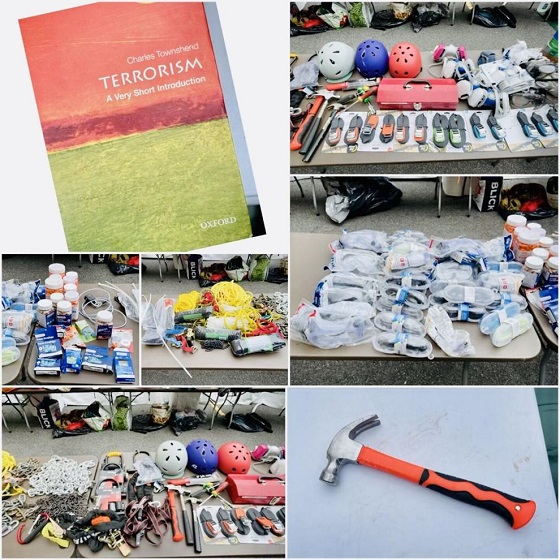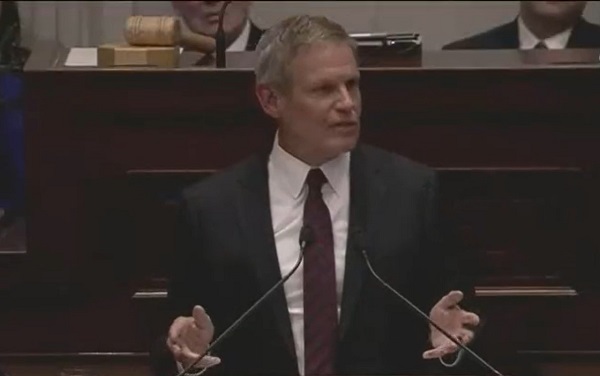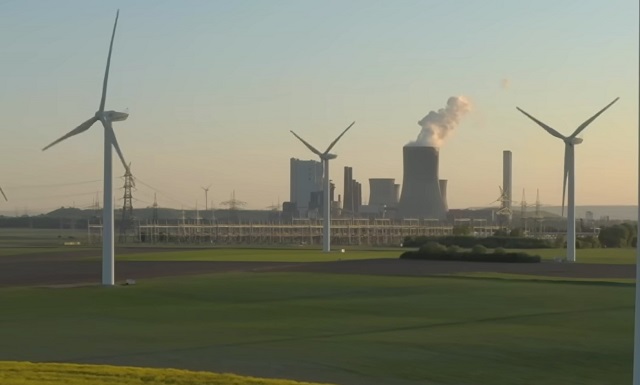Alberta
Child and Youth Advocate says Pepper Spray is used far too often in Alberta Young Offender Centres

From the office of Alberta’s Child and Youth Advocate
Child and Youth Advocate releases special report on OC spray and segregation in Alberta’s young offender centres
Alberta’s Child and Youth Advocate has completed a special report on oleoresin capsicum spray (OC spray, commonly referred to as pepper spray) and segregation in young offender centres.
The Advocate is making four recommendations related to reducing the use of OC spray and segregation as well as increasing accountability measures.
“Young people in custody often have complex needs and may present with difficult and challenging behaviours,” said Del Graff, Child and Youth Advocate. “It is imperative that the Young Offender Branch explores approaches to improve the health and well-being of young people while ensuring a safe environment for everyone. I sincerely hope the recommendations from this report will be quickly acted on to improve the circumstances for youth in custody.”
From January to March 2019, the OCYA received input from over 100 stakeholders through community conversations and one-to-one interviews. Young people, youth justice stakeholders, and community stakeholders shared their perspectives and experiences.
The purpose of this report is to provide advice to government related to improving the safety and well-being of young people in custody.
A copy of the report: “Care in Custody: A Special Report on OC Spray and Segregation in Alberta’s Young Offender Centres” is available on our website:
http://www.ocya.alberta.ca/adult/publications/ocya-reports/
The Child and Youth Advocate has the authority under the Child and Youth Advocate Act to complete special reports on issues impacting children and youth who are receiving designated government services. This is the Advocate’s fourth special report.
The Office of the Child and Youth Advocate is an independent office of the Legislature, representing the rights, interests and viewpoints of children and young people receiving designated government services.
Executive Summary
In 2016, the Young Offender Branch, Ministry of Justice and Solicitor General, changed its policy, making it easier for correctional peace officers to use OC spray on incarcerated young people. Since then, the use of OC spray in youth justice facilities has steadily increased. By inflicting pain to control behaviour, the use of OC spray can damage relationships with youth justice staff, undermine rehabilitation efforts, and further traumatize young people.
The use of segregation in young offender centres is also a concern, as it can result in physical, psychological, and developmental harm to young people. Segregation is occurring without sufficient guidelines and safeguards to protect the well-being of young people. The current use of segregation undermines the Youth Criminal Justice Act’s (YCJA) principle of rehabilitation and reintegration. If segregation must occur for safety reasons, it should be short-term and must include meaningful interactions, mental health supports, and programming.
Further, complaints and review processes at young offender centres must be transparent and strengthened so that young people can challenge decisions without facing repercussions. They have the right to be supported through those processes by a person such as an advocate. Public reporting will also help ensure accountability and promote fair treatment of young people in custody.
Increased accountability changes behaviour and choices. Under the old policy, when the tactical team had to be called to use OC spray in youth justice facilities, it was only deployed once in approximately four years. Since correctional peace officers have been able to carry and use OC spray, it has been used on young people 60 times in the last three years. In the last four weeks of finalizing this report, OC spray was used 10 times. This example is alarming and highlights the importance and timeliness of this report.
The treatment of young people in custody should uphold their human rights, in alignment with the United Nations Convention on the Rights of the Child (UNCRC).The current use of OC spray and segregation contradict the intention of the UNCRCand other United Nations rules and conventions.1 The Advocate urges the Young Offender Branch to review its policies and practices to ensure they align with the goals of its legislation and support the human rights of the young people they serve.
The Advocate is making the following four recommendations:
- OC spray should only be used in exceptional circumstances, if there is an imminent risk of serious physical harm to a young person or others.
- The Young Offender Branch should review and update their policies and standards to reduce the number of hours a young person can be segregated, ensure that they receive appropriate programming and supports, and improve conditions within segregation.
- The Young Offender Branch should develop an impartial complaints and review process for young people. An impartial multi-disciplinary committee that includes external stakeholders should hear complaints and reviews, and young people should have access to a supportive adult.
- The Young Offender Branch should monitor and publicly report all incidents of OC spray use and segregation annually.
Alberta
Alberta government should eliminate corporate welfare to generate benefits for Albertans

From the Fraser Institute
By Spencer Gudewill and Tegan Hill
Last November, Premier Danielle Smith announced that her government will give up to $1.8 billion in subsidies to Dow Chemicals, which plans to expand a petrochemical project northeast of Edmonton. In other words, $1.8 billion in corporate welfare.
And this is just one example of corporate welfare paid for by Albertans.
According to a recent study published by the Fraser Institute, from 2007 to 2021, the latest year of available data, the Alberta government spent $31.0 billion (inflation-adjusted) on subsidies (a.k.a. corporate welfare) to select firms and businesses, purportedly to help Albertans. And this number excludes other forms of government handouts such as loan guarantees, direct investment and regulatory or tax privileges for particular firms and industries. So the total cost of corporate welfare in Alberta is likely much higher.
Why should Albertans care?
First off, there’s little evidence that corporate welfare generates widespread economic growth or jobs. In fact, evidence suggests the contrary—that subsidies result in a net loss to the economy by shifting resources to less productive sectors or locations (what economists call the “substitution effect”) and/or by keeping businesses alive that are otherwise economically unviable (i.e. “zombie companies”). This misallocation of resources leads to a less efficient, less productive and less prosperous Alberta.
And there are other costs to corporate welfare.
For example, between 2007 and 2019 (the latest year of pre-COVID data), every year on average the Alberta government spent 35 cents (out of every dollar of business income tax revenue it collected) on corporate welfare. Given that workers bear the burden of more than half of any business income tax indirectly through lower wages, if the government reduced business income taxes rather than spend money on corporate welfare, workers could benefit.
Moreover, Premier Smith failed in last month’s provincial budget to provide promised personal income tax relief and create a lower tax bracket for incomes below $60,000 to provide $760 in annual savings for Albertans (on average). But in 2019, after adjusting for inflation, the Alberta government spent $2.4 billion on corporate welfare—equivalent to $1,034 per tax filer. Clearly, instead of subsidizing select businesses, the Smith government could have kept its promise to lower personal income taxes.
Finally, there’s the Heritage Fund, which the Alberta government created almost 50 years ago to save a share of the province’s resource wealth for the future.
In her 2024 budget, Premier Smith earmarked $2.0 billion for the Heritage Fund this fiscal year—almost the exact amount spent on corporate welfare each year (on average) between 2007 and 2019. Put another way, the Alberta government could save twice as much in the Heritage Fund in 2024/25 if it ended corporate welfare, which would help Premier Smith keep her promise to build up the Heritage Fund to between $250 billion and $400 billion by 2050.
By eliminating corporate welfare, the Smith government can create fiscal room to reduce personal and business income taxes, or save more in the Heritage Fund. Any of these options will benefit Albertans far more than wasteful billion-dollar subsidies to favoured firms.
Authors:
Alberta
Official statement from Premier Danielle Smith and Energy Minister Brian Jean on the start-up of the Trans Mountain Pipeline

-

 International2 days ago
International2 days agoTrump campaign says he will pardon Jan. 6 prisoners on ‘case-by-case basis’ if re-elected
-

 conflict2 days ago
conflict2 days agoNYPD says protesters had weapons, gas masks and ‘Death to America!’ pamphlets
-

 illegal immigration2 days ago
illegal immigration2 days agoBiden’s DOJ Threatens To Sue Another State For Enforcing Immigration Law
-

 Economy2 days ago
Economy2 days ago‘Gambling With The Grid’: New Data Highlights Achilles’ Heel Of One Of Biden’s Favorite Green Power Sources
-

 ESG1 day ago
ESG1 day agoTennessee Taking Lead In Protecting Civil Rights And Free Enterprise—And Stopping Political Debanking
-

 illegal immigration2 days ago
illegal immigration2 days agoMore Chinese Illegal Migrants Apprehended At Southern Border In Two Days Than In All Of 2021: REPORT
-

 Energy1 day ago
Energy1 day agoMarket Realities Are Throwing Wrench In Biden’s Green Energy Dreams
-

 conflict17 hours ago
conflict17 hours agoOver 200 Days Into War, Family Of American Hostage in Gaza Strives For Deal To Bring Son Home










